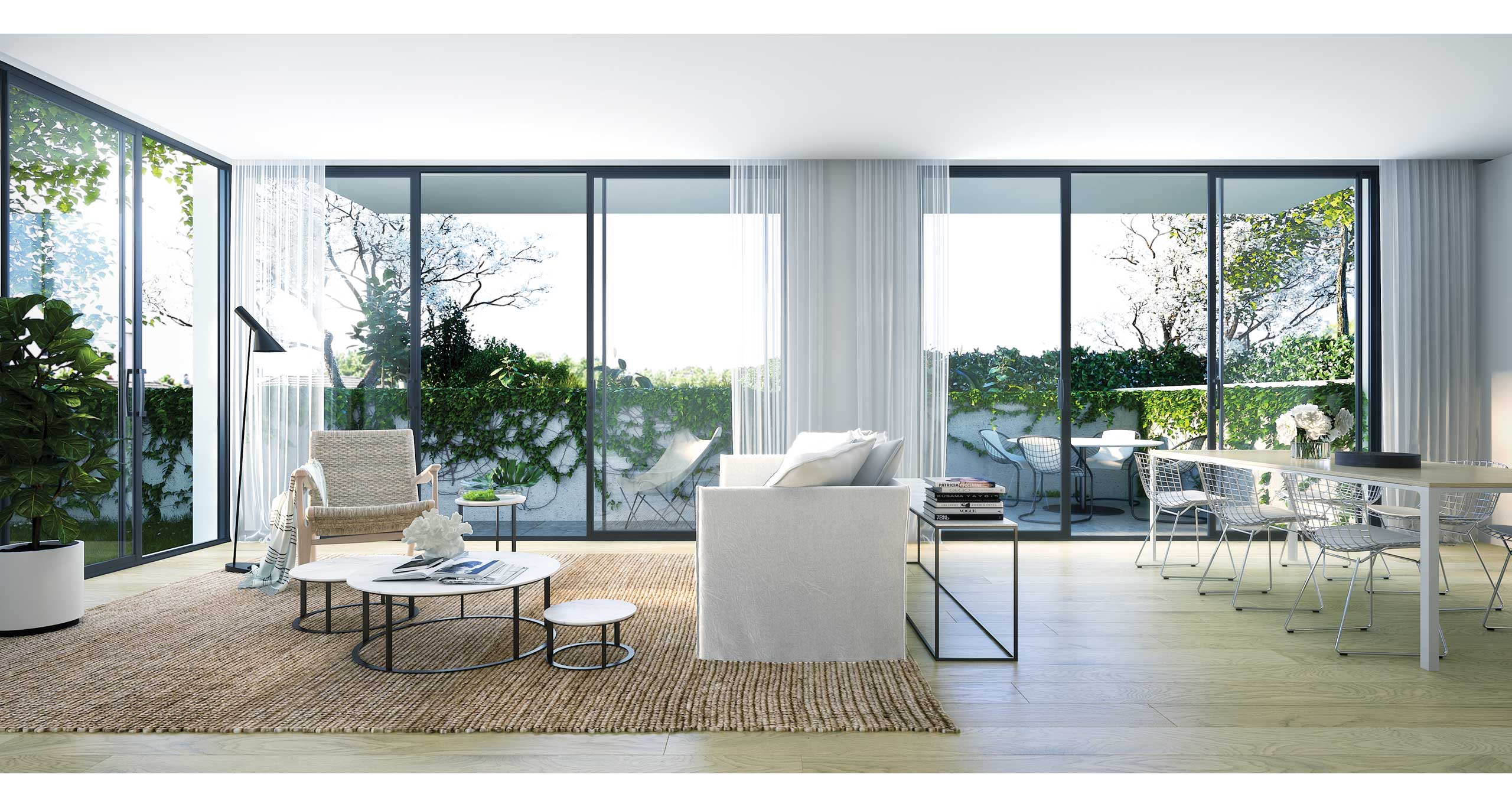Binyan Studios is Australia’s Premier Provider of spectacular pre-build 3D imagery and film, helping to convert billions in off the plan sales each year.
Why do Sydney’s most prolific developers turn to the artistry of a particular rendering studio to communicate their vision to the market?
“Everyone has the same tools nowadays.” Says Andrei Dolnikov, Founder of Binyan Studios. “What sets us apart isn’t the tools any more, it’s the artists that we have. We’re looking not only for the technical expertise, we’re looking for the eye, a vision, a devotion, a certain energy that person brings that’s going to elevate their technical work into an art form.”
With offices in Sydney, Melbourne, Brisbane and New York, Binyan is the leading provider of their craft in the country – and their work graces the brochures and websites of Sydney’s most prestigious developments.
In 2015 Binyan opened their studio in Manhattan, another example of Australian creatives and designers taking the USA by storm. Andrei says: “In the past, quality of the technical tools to achieve visuals dictated the state of the art, the profession has moved on. The latest software and hardware are available to all creative studios and is no longer a differentiator.
“Realism has become a given in our industry. It’s the base requirement” Says Dolnikov, “The art lies in tapping into the aspirations of a particular type of buyer, and presenting a moment in time that crystalizes their dream.”
“Being able to achieve this connection at the critical point of engagement: a print ad, a website, a brochure or a display suite is where we create enormous value for our clients.”
“Visualisation must
elevate a design to its
highest possible incarnation”
Andrei says visualisers can’t rely on architects to provide them with masterpieces of design on every project. Often times, he says, the work is about taking something more humble in its aesthetic nature and making out of it something great. “Something that a viewer can find appealing, attractive and respond to emotionally. What we do is much more akin to what an architectural photographer does than what an architect does.”
Images can reflect the lived-in traces of the lifestyle on offer. For example, beautifully lit produce on a kitchen bench top is suggestive of a sumptuous environment for preparing food.
“It’s a real, intimate experience,” Andrei explains. “We’re injecting the human presence without necessarily having to put people within the image.”
Indeed, Andrei thinks that to tell an emotional story the human figure doesn’t need to be present at all. “The most visceral, emotive quality one can bring to the image is through lighting and climate; the temperature of the light, the angle of the light, long shadows versus direct light – all of this has a strong subjective character to the way that viewer is perceiving reality. Hence the phrase, painting your project in the best light.”

For Andrei, the imperfection and randomness of nature can have a poetic quality to it. Not only the way nature frames an image, but the way it weathers the building itself, brings a realism that buyers relate to.”
“Presenting mouth-watering
experiences,through a
multi-discipline approach”
“Something that’s too perfect is fake. Not to get too philosophical, but life is imperfect. The focus has moved in our work from ‘do we have the best model’ or ‘do we have the most detailed texture’, to questions of taste, of aspiration and can we capture the zeitgeist of a particular image, a project, a location, a target demographic.
“We are engaged in finessing the renderings not purely as rendering technicians, but we have become landscape architects, furniture stylists, art curators, accessory collectors. So many disciplines are feeding into what we do. Our field is transcending its technical form and merging into a higher creative endeavour.”
Animation, Andrei believes, is where all these things come together. “Instead of simply showing off architecture, you can transport the viewer into an experience that is quite personal. The power of film is well-established when it comes to commercial outcomes; whether it’s that latest Hollywood blockbuster or the realisation of a lifestyle in a new waterfront precinct.”

Emotion sells property
This shift from objective portrayal to internal reflection is a sign the industry is maturing, Andrei says. “At the beginning of any industry, the focus is on meeting the base expectations of its clients. The goal was to make things look realistic. The tools were there to make architecturally accurate portrayals of the unbuilt.
“Now, we see the needs of our developer clients leaning towards filmic, emotive solutions. They want their audience to feel uplifted, they themselves want to feel inspired. We seek to inspire nostalgia and hope through our imagery. Simply representing things accurately is no longer enough. It’s not just about making things look real, it’s about making people feel real. “This is how we capture the imagination of buyers. It’s how we energise the sales process and achieve outstanding results.”

![]()
The tools continue to evolve
Andrei believes we are only scratching the surface experiential visualisation. Of course, 3D walk throughs and virtual reality are recent leaps forward, but I imagine technology in the not-too-distant future that will support visual marketing experiences that respond to our tastes, our hobbies, our eccentricities. Imagine if the art on the wall of the CGI that you’re looking at changed with the books you’ve recently read.”
 Contact Binyan Studios
Contact Binyan Studios
bd.com.au/binyan
1300 555 555


